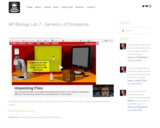
Mr. Andersen describes the virtual fly lab. Software at sciencecourseware.org allows for multiple matings and statistical analysis.
- Subject:
- Agriculture & Natural Science
- Biology
- Material Type:
- Lesson
- Provider:
- Bozeman Science
- Date Added:
- 05/29/2014

Mr. Andersen describes the virtual fly lab. Software at sciencecourseware.org allows for multiple matings and statistical analysis.
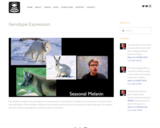
Paul Andersen explains how genotypes can be expressed or not based on changes in the environment. He starts with a brief description of the Himalayan rabbit and how melanin production can be disrupted by high temperature. He explains how this could be advantageous in both the arctic fox and hare.
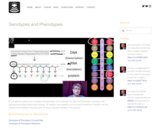
Paul Andersen explains how changes in the genotype of an individual can affect the phenotype. He begins with genotype:phenotype::letters:story analogy. He explains how mutations can be neutral, beneficial or harmful. He also explains how mistakes in the cell cycle can lead to disorder, sterility or new species.
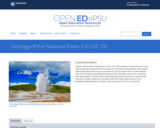
Geysers and grizzlies and glaciers, oh my. The national parks may be America's best idea, saving the finest parts of the nation for everyone to enjoy forever. What better way to learn about the natural world than to tour the parks with us? We'll explore how the mountains and valleys formed and why they often come with volcanoes and earthquakes. You'll see what really killed the dinosaurs and how we can help save their modern relatives in the parks. With film clips, slide shows, and our geological interpretations of classic rock songs, isn't it time for a road trip?
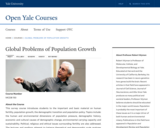
This survey course introduces students to the important and basic material on human fertility, population growth, the demographic transition and population policy. Topics include: the human and environmental dimensions of population pressure, demographic history, economic and cultural causes of demographic change, environmental carrying capacity and sustainability. Political, religious and ethical issues surrounding fertility are also addressed. The lectures and readings attempt to balance theoretical and demographic scale analyzes with studies of individual humans and communities. The perspective is global with both developed and developing countries included.
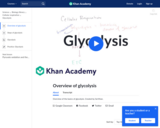
Overview of glycolysis
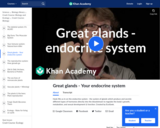
Hank fills us in on the endocrine system - the system of glands which produce and secrete different types of hormones directly into the bloodstream to regulate the body's growth, metabolism, and sexual development & function.
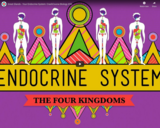
The video resource "Great Glands - Your Endocrine System: CrashCourse Biology #33" is included in the "Biology" course from the resources series of "Crash Course". Crash Course is a educational video series from John and Hank Green.

In this video Paul Andersen explains how the greenhouse effect and greenhouse gases keep our planet warm enough to be habitable. He explains how greenhouse gases keep heat closer to the surface. He finally shows how increases in greenhouse gases may lead to dangerous global warming.
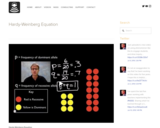
In this video Paul Andersen explains the elements in the Hardy-Weinberg equation; including the allele frequency and phenotype frequency. He begins with a brief explanation of phenotypes and genotypes. A sample problem is worked out and another problem is included.
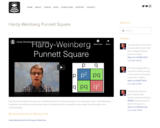
Paul Andersen explains how you can combine the power of a Punnett square for an entire gene pool. Hardy-Weinberg equilibrium will remains constant under several constrains and the probability square makes the information more understandable.
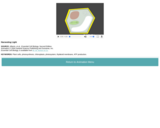
This "Harvesting Light" learning object is the from the Sumanas resource series. Sumanas offers a robust selection of content and services that are directed at enhancing the learning experience.
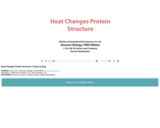
This "Heat Changes Protein Structure" learning object is the from the Sumanas resource series. Sumanas offers a robust selection of content and services that are directed at enhancing the learning experience.
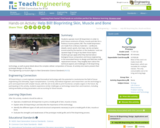
Students operate mock 3D bioprinters in order to print tissue constructs of bone, muscle and skin for a fictitious trauma patient, Bill. The model bioprinters are made from ordinary materials— cardboard, dowels, wood, spools, duct tape, zip ties and glue (constructed by the teacher or the students)—and use squeeze bags of icing to lay down tissue layers. Student groups apply what they learned about biological tissue composition and tissue engineering in the associated lesson to design and fabricate model replacement tissues. They tangibly learn about the technical aspects and challenges of 3D bioprinting technology, as well as great detail about the complex cellular composition of tissues. At activity end, teams present their prototype designs to the class.
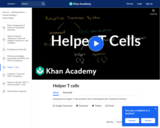
Introduction to helper T cells and their role in activating B cells
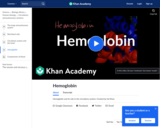
Hemoglobin and its role in the circulatory system
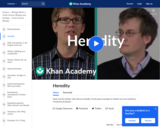
Hank and his brother John discuss heredity via the gross example of relative ear wax moistness.
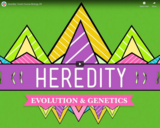
The video resource "Heredity: Crash Course Biology #9" is included in the "Biology" course from the resources series of "Crash Course". Crash Course is a educational video series from John and Hank Green.
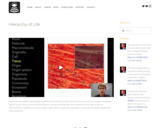
Paul Andersen explains how biology is ordered in the hierarchy of life. He first of all describes how emergent properties appear as you move to more inclusive systems. The then describes life at the following levels; atom, molecule, macromolecule, organelle, cell, tissue, organ, organ system, organisms, population, community, ecosystem, biome and finally biosphere.

This "High-Throughput Sequencing" learning object is the from the Sumanas resource series. Sumanas offers a robust selection of content and services that are directed at enhancing the learning experience.